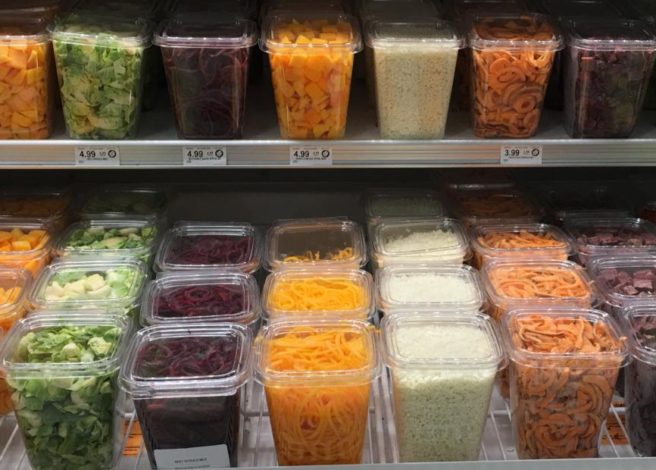At a Glance
- Modified atmosphere packaging uses tailored gas mixes (like low O₂, high CO₂) to slow spoilage and protect freshness.
- It extends shelf life significantly, especially for meats, produce, and fresh-cut foods.
- Packaging materials and seal integrity are critical to maintain the right gas balance over time.
- MAP systems require investment, including gas control equipment and ongoing quality checks — but offer strong ROI through waste reduction.
Is your food business watching profits vanish with every spoiled product? Modified atmosphere packaging (MAP) sets market leaders apart, and businesses that don’t adopt MAP techniques risk losing market share.
We recently interviewed Jeff Brandenburg, who founded and leads The Qfresh Lab/JSB Group, LLC. Brandenburg offers exceptional insight into fresh food packaging innovation, drawing from his 45+ years in packaging technology. His expertise is complemented by his Chemical and Biomedical Engineering background, Food Safety knowledge, and his dual roles as an industry consultant and university educator.
Consider this your roadmap to turning the oxygen inside your packaging from enemy to ally.
The Business Case for Understanding MAP
Modified atmosphere packaging represents more than a technical innovation. It’s a critical business differentiator. Consider it like creating a custom climate for your products. They’ll age beautifully like fine wine, not droop like last week’s lettuce.
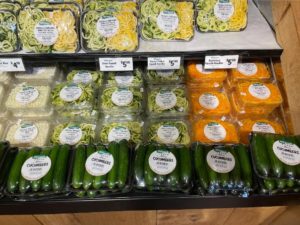 A modified atmosphere is any packaging environment that differs from standard conditions. This means it has less than 21.7% oxygen or more than 300 parts per million (PPM) CO₂. In plain English: if the air inside your package differs from the air outside, congratulations — you’ve got yourself some modified atmosphere packaging! But it has to be appropriately designed to provide benefits. The way you implement this technology could set you apart in the market. It can mean the difference between leading and letting competitors take your profits (and your customers!)
A modified atmosphere is any packaging environment that differs from standard conditions. This means it has less than 21.7% oxygen or more than 300 parts per million (PPM) CO₂. In plain English: if the air inside your package differs from the air outside, congratulations — you’ve got yourself some modified atmosphere packaging! But it has to be appropriately designed to provide benefits. The way you implement this technology could set you apart in the market. It can mean the difference between leading and letting competitors take your profits (and your customers!)
It turns out that what’s in your package is just as important as what’s not. Industry players who fail to master MAP face the following:
- Product rejection by major retailers due to discoloration or premature spoilage
- Distribution limitations that prevent regional or national scaling
- Significantly higher spoilage rates and associated financial losses
- Inability to compete with more technically advanced competitors
Types of MAP: Which One is Right for Your Products?
Successful implementation requires understanding two distinct approaches:
- Passive MAP: Using the natural breathing of products to create ideal internal gas conditions in packaging
- Active MAP: Employing technological intervention to rapidly establish optimal gas composition
Mixing up approaches can lead to costly production errors and product failures.
Passive MAP: The Science of Fresh Produce Packaging
Biological Realities That Affect Your Product
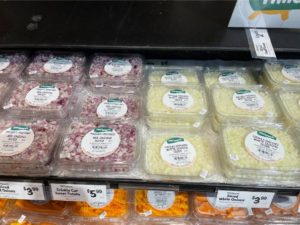 Fresh produce keeps breathing after harvest. This fact brings both challenges and opportunities. Without a proper understanding of respiration rates, packaging decisions become guesswork.
Fresh produce keeps breathing after harvest. This fact brings both challenges and opportunities. Without a proper understanding of respiration rates, packaging decisions become guesswork.
In sealed containers, respiration changes the atmosphere air. Oxygen goes down while carbon dioxide goes up. However, this passive process can take up to 3-5 days to reach optimal levels.
Enzymatic Browning: The Visible Failure That Costs Market Share
Fruits and vegetables like apples, avocados, mangoes, and lettuce have specific enzymes. When these enzymes meet oxygen, they can cause discoloration that looks bad. This visual defect isn’t a food safety issue, but it can cause consumers to reject the product right away. It may also harm a brand’s reputation for a long time. When consumers are “buying with their eyes,” this browning can be a dealbreaker for freshness.
Companies without effective enzymatic browning prevention strategies face the following:
- Routine rejection of shipments by quality control inspectors
- Significant increases in return rates from retailers
- Severe market share depletion as consumers switch to competitors
- Struggles to sell imperfect produce to high-end retailers — customers only pay premium prices for food that looks flawless
Active MAP: Technical Implementation for Competitive Advantage
Nitrogen Flushing
Nitrogen flushing technology is key for browning-sensitive products. It quickly lowers oxygen levels from 21.7% to about 5-8%. This gives operators a vital time advantage. This technological advantage:
- Reduces initial oxygen levels before dangerous browning thresholds are reached
- Prevents premature quality degradation during distribution
- Creates longer sellable shelf life that retailers increasingly demand
- Delivers measurable ROI through reduced shrink and expanded distribution capabilities
Nitrogen is the industry standard because it’s:
- Chemically inert, preventing unforeseen reactions with food components
- Abundant (comprising 78% of atmospheric air)
- Cost-effective compared to alternative gases
- Readily available and presenting no regulatory hurdles
Here’s what separates the MAP masters from the packaging amateurs: fresh produce needs some oxygen, just not too much. It’s like Goldilocks picking porridge: not too hot, not too cold, but just right. For most items, aim for about 5-8%. For products that brown easily, stick to below 3%. When companies try to remove all the oxygen, they’re choking their produce like a turtleneck that’s way too tight. The result? Anaerobic (oxygen-deprived) spoilage of your produce.
MAP for Protein Products: Different Science, Different Implementation
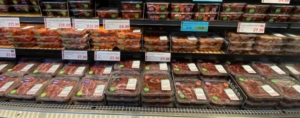
Those who work with meat, poultry, and dairy encounter unique challenges. They require a different approach to address these issues.
Complete Oxygen Elimination: Non-Negotiable for Protein Preservation
When it comes to meat and cheese, it’s the complete opposite of produce. Oxygen is not invited to the packaging party. Why? Oxygen makes fats go rancid and causes that unappetizing color change nobody wants to see in the meat case. Top performers in the industry keep oxygen levels very low, below 0.005%. They use special packaging that stops air from getting in. Companies failing to achieve these ultra-low oxygen levels experience:
- Accelerated product discoloration
- Off-flavors from oxidized fats
- Significantly reduced shelf life
- Higher return rates and associated financial losses
Implementation Tech When Zero Oxygen is Needed
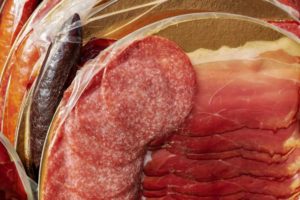 Two primary methods dominate the protein segment:
Two primary methods dominate the protein segment:
- Complete nitrogen gas flushing is a significant investment, but it ensures quality results every time.
- Vacuum packaging can potentially affect product appearance due to the compression of the product when the air is removed.
Quality Verification: Required Investment for Credibility
No MAP implementation is complete without verification capabilities. In this case, the adage, “You have to spend money to make money,” rings true. This tech involves handheld meters and placing a measuring needle directly into the packaging. Specialized oxygen/carbon dioxide meters represent an essential investment for:
- Documenting compliance with customer specifications
- Identifying failures before products leave your facility
- Supporting continuous improvement initiatives
- Defending your operation during quality disputes
Operations that skip these verification tools often discover quality issues later. This usually happens after costly shipments are returned.
Following the MAP
Modified atmosphere packaging used to be an advantage. Now, it’s a necessity. Companies that lack MAP expertise are losing shelf space. Competitors are stepping in with products that last longer and look more appealing.
For small and mid-size food processors, implementing proper MAP technology isn’t just about growth. It’s about staying in business. Retailers want suppliers who can deliver consistent quality and longer shelf life.
The bottom line: master MAP technology and join the fresh-food revolution. If not, you’ll see your competitors’ products stay fresher longer while yours fade into yesterday’s news. The choice seems pretty clear. Doesn’t it?
Speaking of clarity, Inline Plastics is committed to finding what works best for you, even when that path leads elsewhere. Don’t hesitate to contact us with any questions along the way.
Interested in learning more about The QFresh Lab/JSB Group, LLC? Visit their website or contact them directly.

